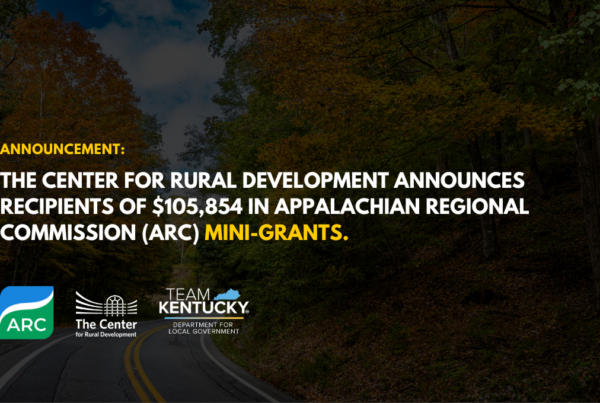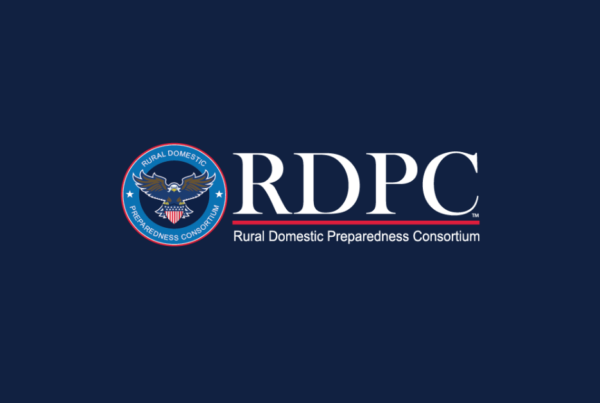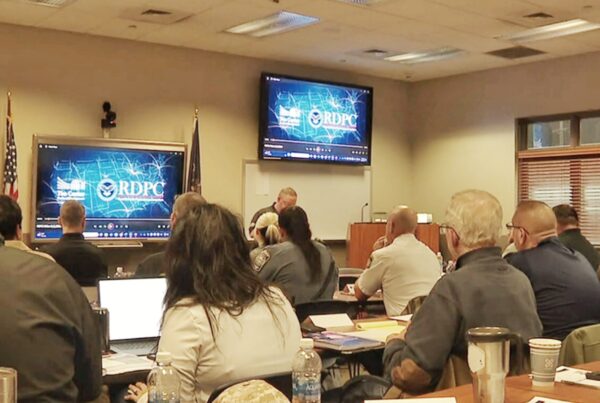
U.S. Congressman Harold “Hal” Rogers (KY-05) and Lonnie Lawson, president and CEO of The Center for Rural Development, meet with FCC Chairman Tom Wheeler.
The Center for Rural Development—a regional leader in technology—is leading the efforts to bring reliable, high-speed Internet to Eastern Kentucky.
U.S. Congressman Harold “Hal” Rogers (KY-05), Lonnie Lawson, president and CEO of The Center, and other area leaders met with Federal Communications Commission (FCC) Chairman Tom Wheeler on a recent trip to McKee and Hazard in Eastern Kentucky to discuss SOAR’s (Shaping Our Appalachian Region) efforts at reducing the rural digital divide.
The “digital divide” is a term that refers to the gap between demographics and regions that have access to modern information and communications technology, and those that don’t or have restricted access.
Rogers invited Wheeler to meet with local leaders about innovative projects that are already underway to utilize the anticipated connection to high-speed, high-capacity fiber optic cable in the region.
“Chairman Wheeler shared a wealth of insight and expertise on a broad range of telecom issues,” Rogers said. “His visit comes during a critical time in Eastern Kentucky, as our local communities pave the way for broadband access that can transform the way we do business, administer healthcare, and educate our young people.”
“Broadband is the greatest asset of the 21st Century,” Wheeler added. “We are teaching kids how to harness all of the benefits of broadband-enabled technologies; how to have the skills to use this network to not only obtain a job some day, but to grow jobs here.”
More than a dozen panelists discussed the benefits of broadband and how to address the rural digital divide at a roundtable discussion at Hazard Community and Technical College as part of SOAR’s “Broadband and Business Series.”
According to Lawson, The Center began looking at this growing digital disparity in the SOAR region several years ago. “We became very concerned with the increasing frequency of complaints being expressed by businesses, communities, and individuals seeking to actively engage with the digital world,” he said. “If the SOAR region is to participate in national discussions and in the global economy, we simply could not allow these barriers to stand.”
Under Lawson’s direction, The Center has taken a prominent role in addressing the issue of access to affordable high-speed Internet connections in Eastern Kentucky. Along with its own initiatives, The Center has been an active partner with the Commonwealth of Kentucky on the KentuckyWired project.
“What began as a fiber-optic infrastructure project for Eastern Kentucky alone, the Kentucky Super I-Way was quickly recognized and adopted as a model for building a statewide KentuckyWired network,” said Lawson, committee chair of the SOAR Broadband Working Group. “Although these two projects are distinct in purpose, the coordinated and combined efforts of The Center and the Commonwealth, to provide a consolidated solution for all of Kentucky, is a winning approach.”
Kentucky currently ranks 46th in broadband availability and 47th in broadband speed. Approximately 23 percent of rural areas in Kentucky do not have access to broadband.
In the coming months, The Center will be providing free strategic planning sessions to help communities learn how to connect to the new network and will be working to coordinate local efforts with regional planning as the Super I-Way portion of KentuckyWired is deployed.
For more information on broadband expansion, contact Larry Combs, director of business services and technology at The Center, at 606-677-6000.




